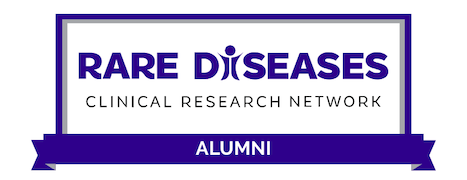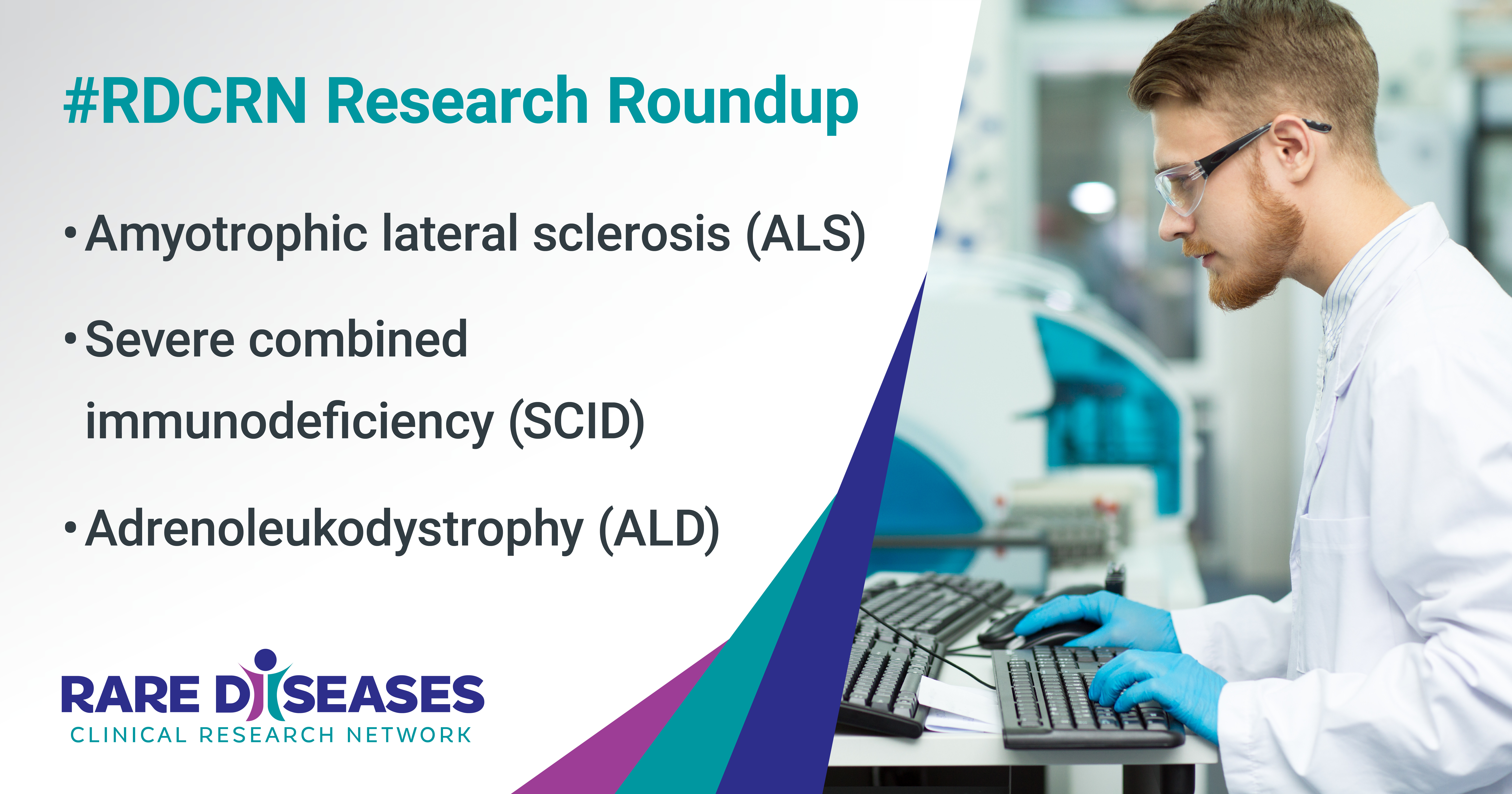Each week, we share summaries of recent Rare Diseases Clinical Research Network (RDCRN) grant-funded publications. Read new research on amyotrophic lateral sclerosis (ALS), severe combined immunodeficiency (SCID), and adrenoleukodystrophy (ALD).
Occupational Lead Exposure is Associated with Shorter Survival in ALS
Clinical Research in ALS and Related Disorders for Therapeutic Development (CReATe): Occupational lead exposure and survival with amyotrophic lateral sclerosis
Environmental risk factors are thought to play a role in ALS risk but may also impact the rate of disease progression and survival. Lead, given its known neurotoxicity, is one such exposure. Prior studies that have relied on biomarkers of lead exposure have yielded conflicting results.
In this study, researchers evaluated the relationship between occupational lead exposure prior to onset of ALS on the one hand, and disease progression and survival following onset of ALS on the other hand. Lead exposure was determined using a job-exposure matrix based on occupations held prior to onset of ALS. This approach avoids the potential for reverse causation bias that may result from reliance on lead biomarkers after disease onset. The impact on disease progression was quantified through both survival analysis and estimation of the rate of functional decline.
Results suggest that lead exposure before onset of ALS is associated with more rapid functional decline and shorter survival following onset of ALS, even after adjusting for other factors known to influence disease progression.
Analysis of TRB Repertoire Helps Predict Outcomes of HCT in Patients with Severe Combined Immunodeficiency
Primary Immune Deficiency Treatment Consortium (PIDTC): Poor T-cell receptor β repertoire diversity early posttransplant for severe combined immunodeficiency predicts failure of immune reconstitution
Severe combined immunodeficiency (SCID) is a form of primary immune deficiency characterized by impaired T-cell development. Following hematopoietic cell transplantation (HCT) for SCID, development of a diverse T-cell receptor β (TRB) repertoire is associated with immune recovery.
In this study, researchers investigated whether longitudinal analysis of the TRB repertoire would accurately describe T-cell receptor diversity and composition following HCT for SCID. Using high-throughput sequencing, the team studied the TRB repertoire in 27 infants with SCID at 3, 6, and 12 months and yearly posttreatment(s).
Results showed that TRB repertoire after HCT for SCID provides a quantitative and qualitative measure of diversity of T-cell reconstitution. Authors note that this analysis can help identify patients who may require a second intervention.
Study Finds High Prevalence of Restless Leg Syndrome in Adults with Adrenoleukodystrophy
Global Leukodystrophy Initiative Clinical Trials Network (GLIA-CTN): Restless Legs Syndrome in X-linked adrenoleukodystrophy
X-linked adrenoleukodystrophy (ALD) is a neurodegenerative disease that causes progressive gait and balance problems. Leg discomfort, sleep disturbances, and pain contribute to daily disability.
In this study, researchers investigated the prevalence and severity of restless legs syndrome (RLS) in 32 adults with ALD. The team gathered data from questionnaires, telephone interviews, neurological examinations, functional gait measures, and laboratory assessments.
Results suggest a high prevalence of RLS in adults with ALD. Researchers also found that ALD patients with RLS have more neurological signs and symptoms, and RLS is more common in females with ALD than in males. Authors note that increased awareness of RLS in patients with ALD would allow for more effective treatment.
The Rare Diseases Clinical Research Network (RDCRN) is funded by the National Institutes of Health (NIH) and led by the National Center for Advancing Translational Sciences (NCATS) through its Division of Rare Diseases Research Innovation (DRDRI). Now in its fourth five-year funding cycle, RDCRN is a partnership with funding and programmatic support provided by Institutes, Centers, and Offices across NIH, including the National Institute of Neurological Disorders and Stroke, the National Institute of Allergy and Infectious Diseases, the National Institute of Diabetes and Digestive and Kidney Diseases, the Eunice Kennedy Shriver National Institute of Child Health and Human Development, the National Institute of Arthritis and Musculoskeletal and Skin Diseases, the National Heart, Lung, and Blood Institute, the National Institute of Dental and Craniofacial Research, the National Institute of Mental Health, and the Office of Dietary Supplements.


